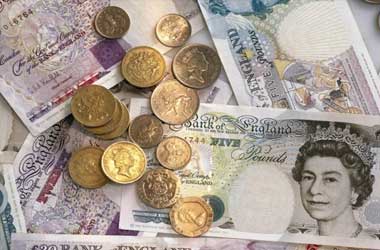 Iron ore prices dropped dramatically, down to around $110 (Tianjin delivery) a tonne after falling from a record high of $230 in May to about $110 a tonne. The dip in iron ore prices comes as China, the world’s largest steel producer, keeps the supply control valve closed. In addition, the fall in the housing market and other factors, including falling demand for steel, have contributed to a steady decline in iron ore prices over the last few months.
Iron ore prices dropped dramatically, down to around $110 (Tianjin delivery) a tonne after falling from a record high of $230 in May to about $110 a tonne. The dip in iron ore prices comes as China, the world’s largest steel producer, keeps the supply control valve closed. In addition, the fall in the housing market and other factors, including falling demand for steel, have contributed to a steady decline in iron ore prices over the last few months.
Handan, China, became the latest area to impose steel output limits after Anhui, Gansu, Fujian, Jiangsu, Jiangxi, Shandong, and Yunnan provinces were ordered to limit production to 2020 levels as part of China’s attempts to reduce carbon emissions. Meanwhile, according to Bloomberg, house sales in China have dropped 20%, and one of the country’s largest property developers, Evergrande, is on the verge of bankruptcy.
Everything rises only to fall. This is a trite observation, but it’s usually accurate when speaking about a growing market. And, although there have been a few remarkable market surges in the last year, iron ore is hard to beat for sheer size. After moving around in a very tight range of approximately $US80-100 per tonne in the months preceding up to, and during, the COVID epidemic, spot prices shot upward beginning in May 2020.
The benchmark Chinese spot price for iron ore peaked at $US233 a tonne on May 12, 2021, more than two-and-a-half times what it was a year earlier. It may not have been as dramatic as Bitcoin’s almost 10-fold yearly rise between March 2020 and March 2021, but iron ore is more than just a blockchain code stored on servers; it is a large-scale, vital industrial product.
The collapse is similarly reminiscent of previous crypto routs, with iron ore prices falling by almost 40% in the last month alone, falling below $US130 per tonne. So, how did its price rise in a manner more akin to a speculative financial asset, and why is it currently falling even faster than it rose?
The boom and collapse seem to be caused by three major factors. The first is China’s financial reaction to the epidemic. When the Chinese economy seems unstable, as it did following months of widespread COVID lockdowns, building is the go-to solution.
Building apartments and infrastructure requires a large amount of steel, and steel necessitates iron ore. As a result, demand was high. Then there was the impact of COVID on supplies, especially from Brazil.
Mines shut down or reduced output when employees were ill with COVID-19, limiting worldwide supplies. Brazil, on the other hand, is returning in a major way. As the COVID issue has subsided, UBS analysts estimate that South America has exported approximately 12% more iron ore this year than at the same time last year.
The most important issue, however, is that this returning supply is entering a market with declining demand. This is due to two factors. One is that the Chinese economy is slowing more broadly, especially in real estate and infrastructure, lowering the forecast for steel and the raw materials required to manufacture it.
“The infrastructure and property sectors account for 20-25% and 25-30% of China’s steel consumption, respectively,” Commonwealth Bank commodities analyst Vivek Dhar said. “We believe that some of the shortfall in China’s steel demand is related to broad limitations imposed to control China’s current COVID-19 outbreak.” The second point is that China does not intend to expand steel production in 2021 compared to 2020.
The issue is that it produced too much in the first half of the year, therefore if steel mills are to meet that goal, production must be reduced by 11.6% in the second half of the year. And, despite the fact that they began cutting down significantly in July, the 8.4 percent decrease compared to last year was insufficient, implying that production cutbacks must be increased further, which they seem to have done so in August so far.
Vivek Dhar is hopeful that Chinese authorities would relax their goals as steel shortages raise prices and hence building expenses. “We believe authorities will ultimately remove steel production limits as steel prices rise since the steel output cutbacks have proven to be more severe than any slowdown in China’s steel demand,” he said.
However, there is another reason that suggests China may impose even tighter restrictions on steel production later this year and early next. Chinese officials will not want a cloud of pollution to linger over Beijing’s Winter Games, which will take place for little over a week beginning February 4 next year. If you have any doubts that China would shut down vast swaths of industry simply to guarantee clean air for a big public event, I can tell you that it does.
During my trip to Beijing in 2015, I experienced unusually clean air and no traffic jams as the city removed half of the cars from its roads (you could only drive your car on alternate days) and shut down many polluting industries in preparation for a major military parade commemorating the city’s victory over Japan in World War II.
So, what does all of this imply for Australia, given that the country’s enormous production and record iron ore price boom have supplied much of the economic firepower to endure COVID lockdowns and border closures? Fortunately, on the budget front, the government has remained much more gloomy in its iron ore pricing predictions than most private sector experts.
The previous budget forecasted that spot prices would return to $US55 per tonne by the end of March next year. We’re still a long way from there, but according to Vivek Dhar, if you construct a straight graph to get there, spot prices are already tracking lower than the budget estimate. “While higher prices in July 2021 still imply that the year-to-date average iron ore price for 2021-22 is still higher than the budget forecast,” he cautioned, “it’s just a matter of days until that reality reverses.”
“Australia’s nominal GDP and federal government tax revenues are projected to decline $6.5 billion and $1.3 billion, respectively, for every $US10/tonne drop in iron ore price compared to the budget estimate this fiscal year.” While we continue to believe that iron ore prices are unlikely to decline as much as the budget predicts in the coming quarters, it is apparent that iron ore prices may not be as beneficial to the Australian economy as anticipated.
“The concern for Australia is that it is not only iron ore prices that are dropping. Copper dropped to its lowest price since April ($US8,894), down 1.92 percent on the day, and is on track for its worst week in two months,” NAB’s Rodrigo Catril said on Friday morning. The overall China economic worries, as well as other worldwide anxieties about the growing wave of Delta variant COVID-19 cases in various nations, are whacking the Australian currency in addition to commodities price declines.
“Risk aversion in the air has boosted the dollar, with pro-growth currencies bearing the brunt of it,” Catril added. The Australian dollar is approaching its lowest point this year, trading at 72.64 US cents. In normal circumstances, this would be a significant boost to economic development since it makes Australian exports more competitive and foreign imports less appealing.
But these aren’t your average moments. Most Australians can’t go abroad anyhow, thus a weaker currency has little effect on local tourism. Overseas visitors are unable to visit Australia, thus the advantage of a cheaper currency is also lost.
Education is Australia’s largest non-commodity export, and a cheaper currency doesn’t assist much if students aren’t permitted into the country. Then there’s the negative side effect of a weaker currency for consumers: inflation. A consistently lower currency will ultimately cause import prices to increase. While the Reserve Bank wants higher inflation, it does not want cost drive inflation, particularly when the cost is not linked to increasing wages for Australian workers.
Because many of the competitive advantages of a lower Australian dollar are presently null and void due to COVID-19 limitations, a weaker currency may just leave Australian consumers comparatively poorer and less able and willing to buy. And it is the last thing the economy needs as it attempts to recover once the current lockdowns are lifted.




